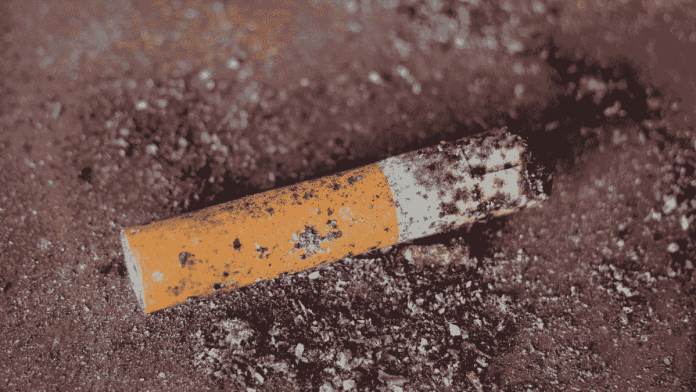New Delhi: Tobacco products aren’t just harmful to those who consume them but also have a negative impact on the environment, generating 1,70,331 tonnes of waste annually, a study conducted across 17 states shows.
The study, conducted by the Indian Council of Medical Research’s National Institute of Cancer Prevention and Research (NICPR) in conjunction with the All India Institute of Medical Sciences, Jodhpur, shows that all forms of tobacco — from cigarettes and bidis to chewing tobacco — leave behind massive waste.
Called the ‘The Environmental Burden of Tobacco Products Wastes in India’, the study was released in Delhi Tuesday.
For the purpose of the study, the authors purchased 70 brands of cigarettes, 94 brands of bidis, and 58 brands of smokeless tobacco and correlated the gross and segregated weight of the plastic, paper, foil, and filters used in them with the data from the Global Adult Tobacco Survey India, 2016-17 (or GATS 2).
The study was conducted in 33 districts across 17 states and Union territories between January and April 2022, with the researchers visiting three vendors in each district.
According to the GATS-2, India has 267 million tobacco users.
“The focus is only on the direct and indirect effects of cigarettes, bidis, or smokeless tobacco products consumption. Nobody is thinking in terms of the environment as a whole,” Pankaj Bharadwaj, a doctor with the School of Public Health and Community Medicine at AIIMS Jodhpur and an author of the study, told ThePrint over the phone.
“We never talk about the amount of plastic and foils that these industries (tobacco) are using. So, we thought of taking this forward. Even those who are not directly or indirectly related to smoking… even they are affected badly with this.”
For the first time, a study goes beyond talking about cigarette butts polluting the environment, he said.
“We tried to find out the kind of packaging of these products and how badly it is impacting the environment,” Bharadwaj added.
In their conclusion, the authors of the study recommend that apart from a strong policy on the implementation of solid waste management and environmental laws, a financial levy should be imposed on the manufacturers of tobacco products.
Also Read: Hard-won gutka ban is now under threat. This time from courts
What the study found
The study found that of the total waste generated by tobacco products, 73,500.66 tonnes were plastic — which, according to the study, was the equivalent of 77 million standard buckets.
It also said that 2.2 million trees are cut annually for the packaging of tobacco products. The annual paper waste generated by tobacco products is 89,402.13 tonnes.
Thirty-three Boeing 747 aircraft can be made from the 6,073.47 tonnes of non-biodegradable aluminium foil waste generated from the packaging, and the filter waste produced is equivalent to nine million standard adult-sized T-shirts, the study said.
The study found that of the total waste generated, 68 per cent is from smokeless tobacco products. Of the rest, cigarettes produce 24 per cent and the rest is from bidis.
This isn’t the first time that the tobacco industry has come under the scanner for environmental pollution.
In 2007, the Jaipur-based Indian Asthma Care Society filed a Public Interest Litigation in the Rajasthan High Court demanding a ban on the plastic sachets of smokeless tobacco products. In particular, the petition targeted the packaging of tobacco products.
“The problem of plastic packaging did not seem very big at that moment, but in the long term, it is a big issue. That is why we targeted the packaging. Plastic sachets used to be scattered all over and, at that time, nobody paid attention to it,” Virendra Singh, a petitioner in the case, told ThePrint.
In its decision, the high court ordered a ban on plastic packaging. The case, known as the Ankur Gutka case, was a landmark one — not only did it lead tobacco companies to switch to paper packaging but, as a result, a committee of experts was constituted by the Union health ministry to submit a detailed report on the harmful effects of smokeless tobacco in 2012.
The committee recommended a complete ban on all forms of smokeless tobacco.
“Immediately after the ban, the quantum of sachets reduced sizeably. In the paper sachets, the smokeless tobacco companies were not able to maintain the taste, so the consumption of chewing tobacco also reduced,” Singh said, adding that even though the magnitude of plastic sachet waste has reduced, it continues to be a cause for concern.
Bharadwaj explained that the study will soon be taken forward to engage environmental experts.
“We are thinking of inviting other stakeholders on board who are working on the environment to take the study forward. Mapping these stakeholders is going on,” he told ThePrint.
(Edited by Uttara Ramaswamy)
Also Read: Govt set to amend tobacco laws to tighten control on evolving products, widen regulatory norms






